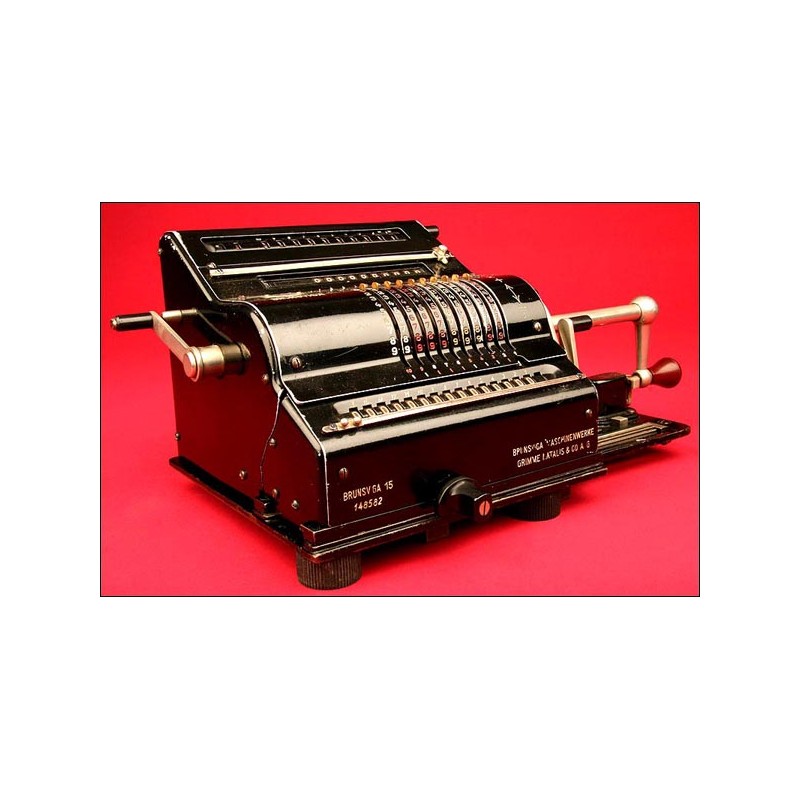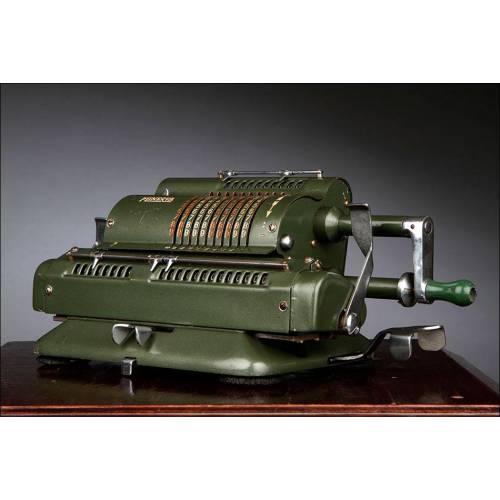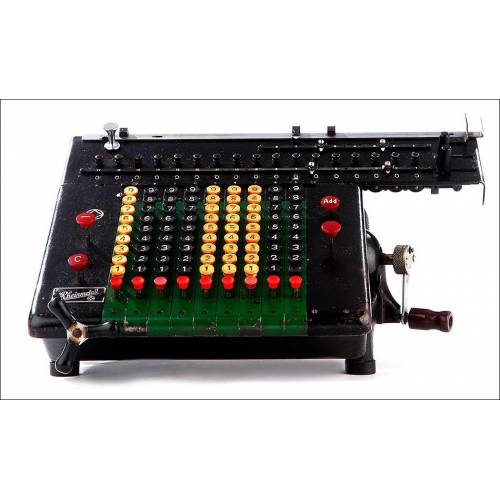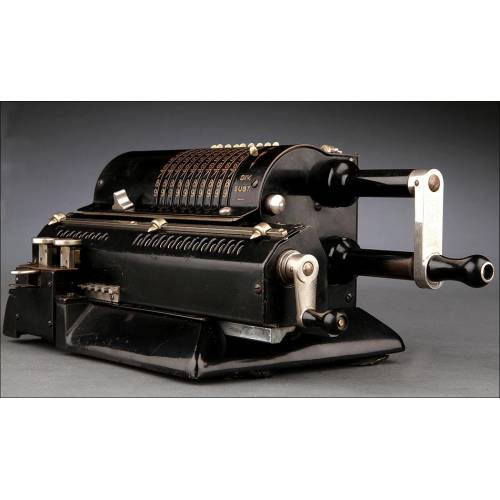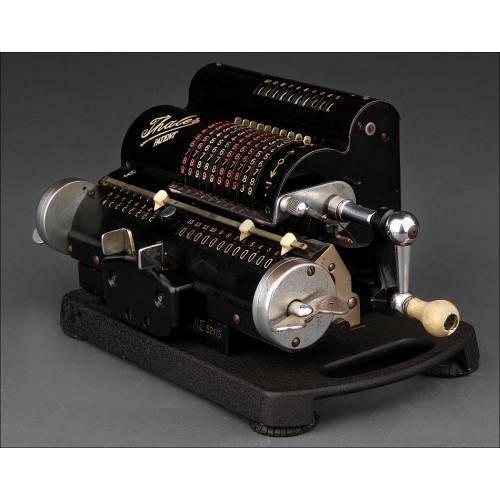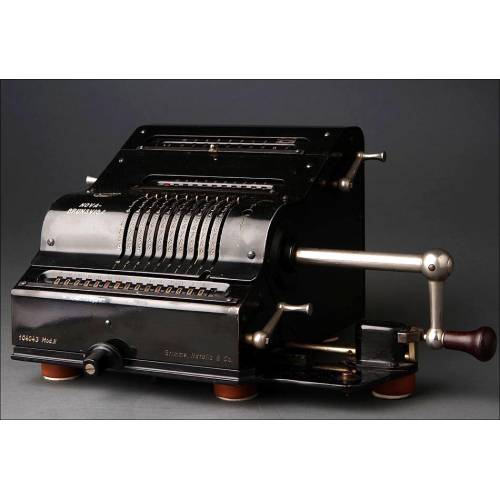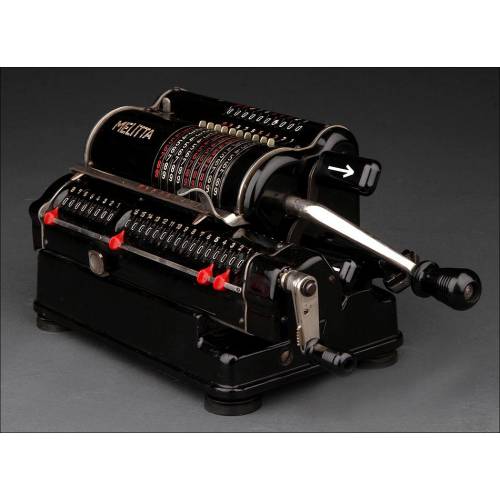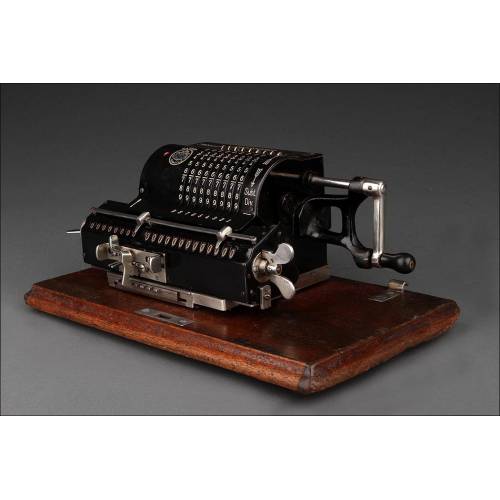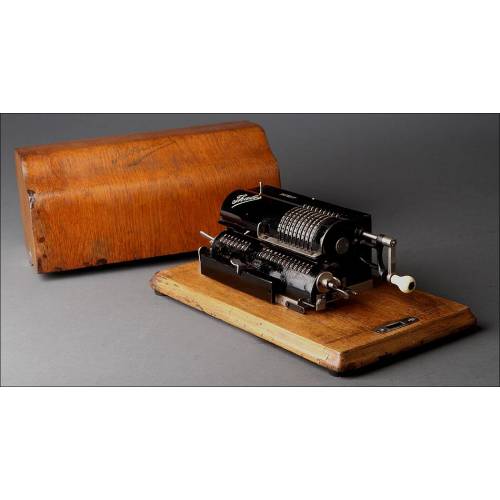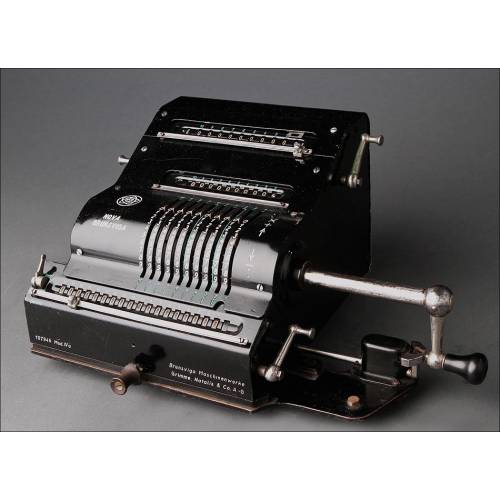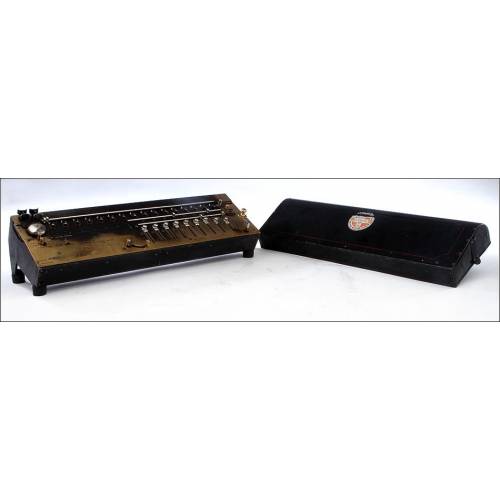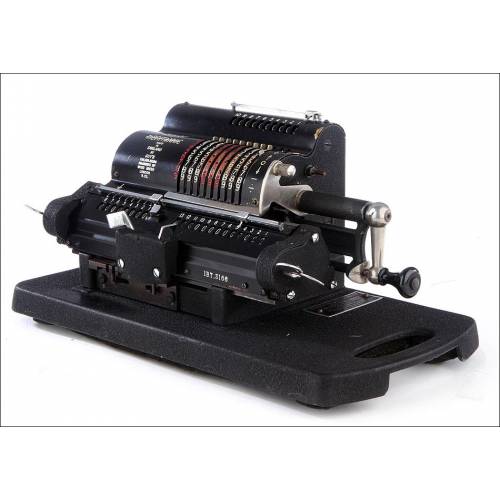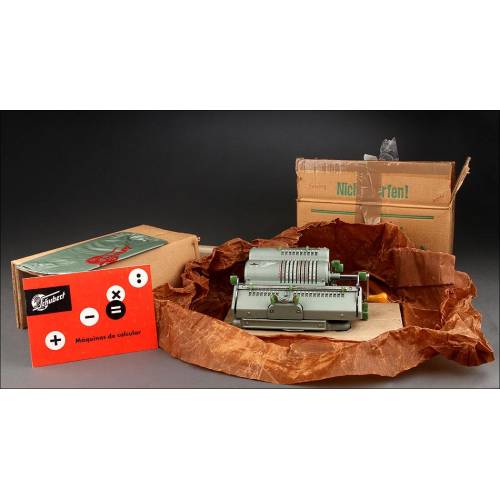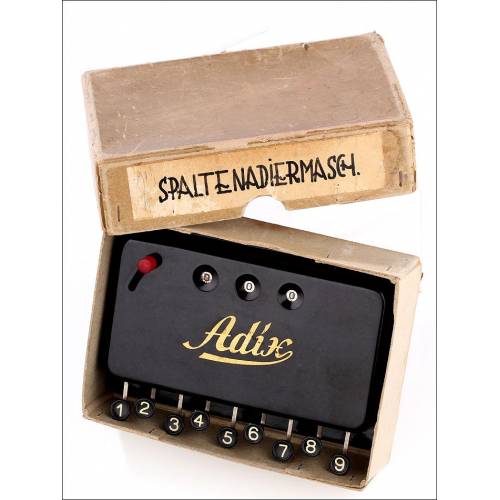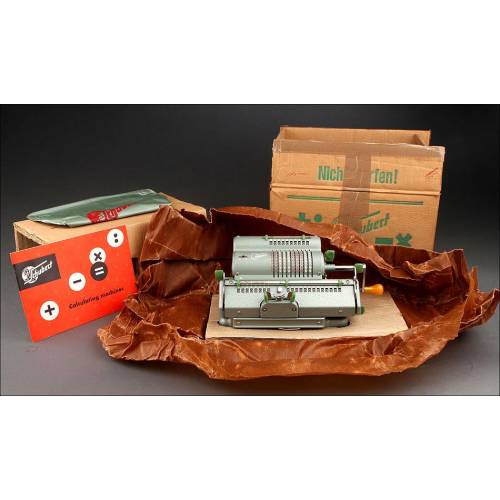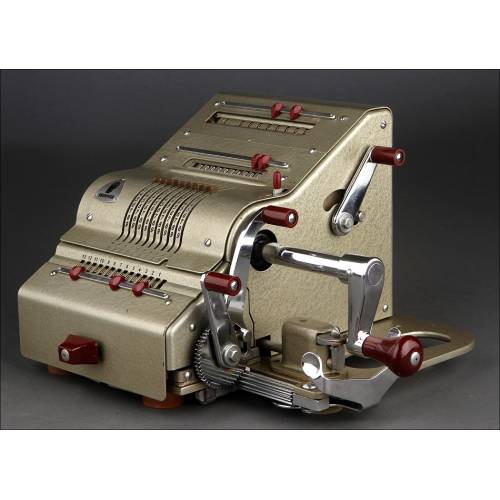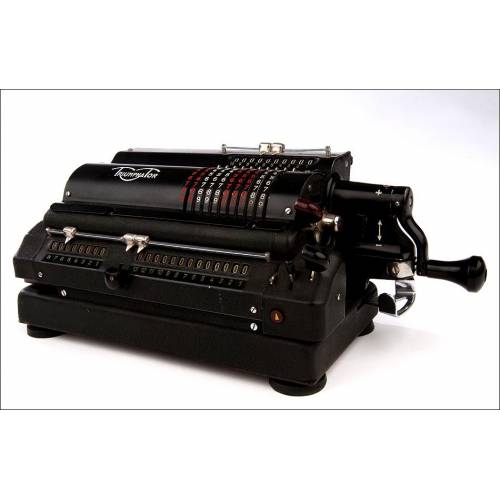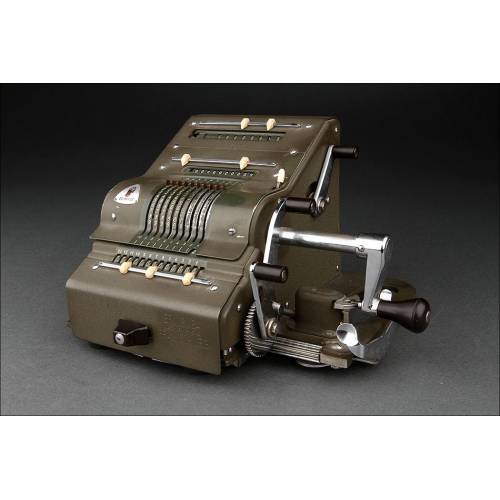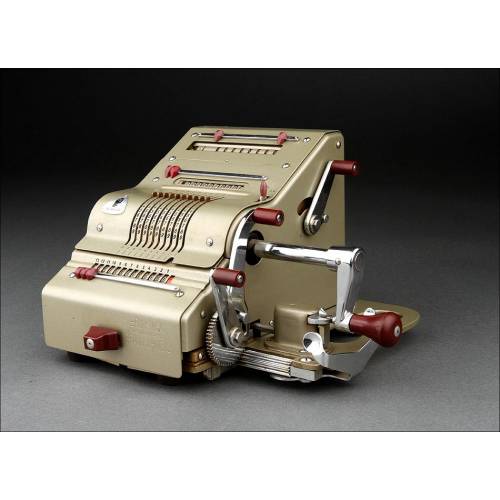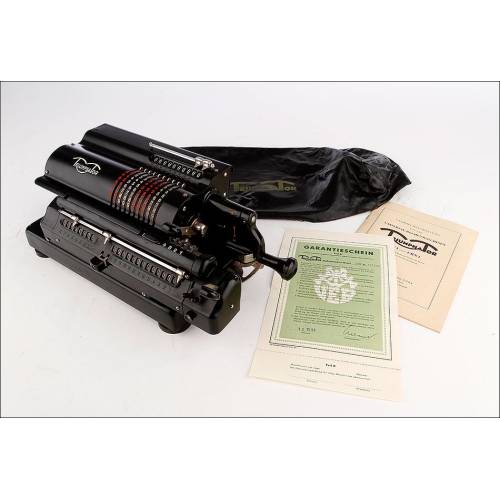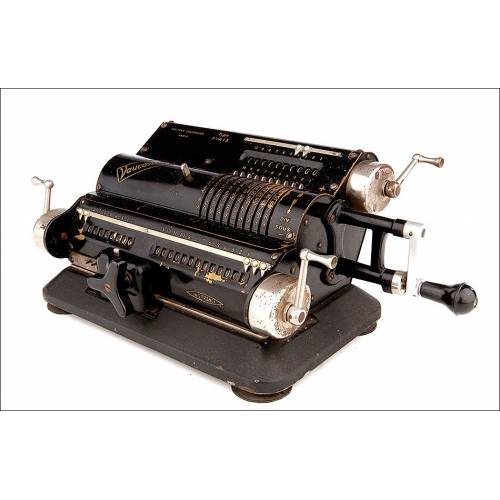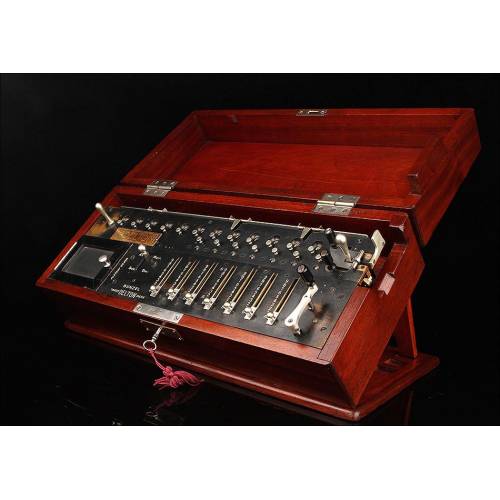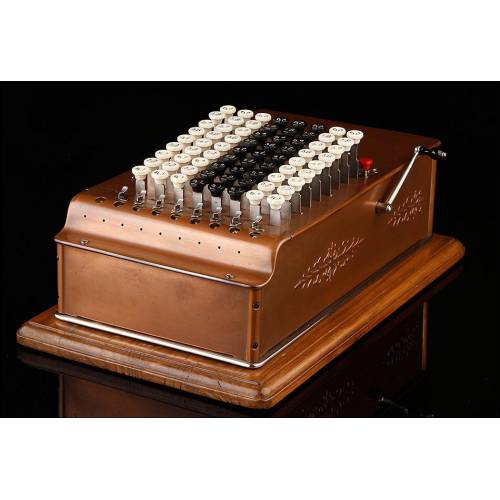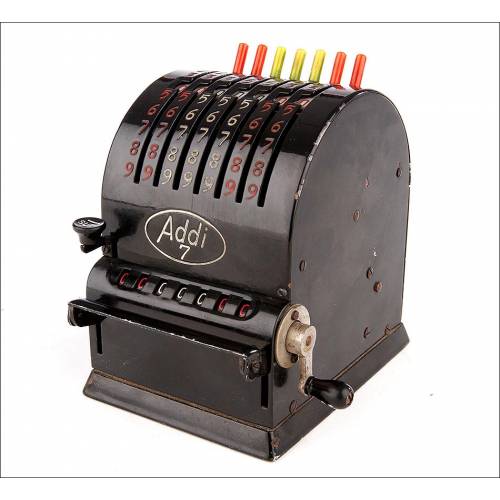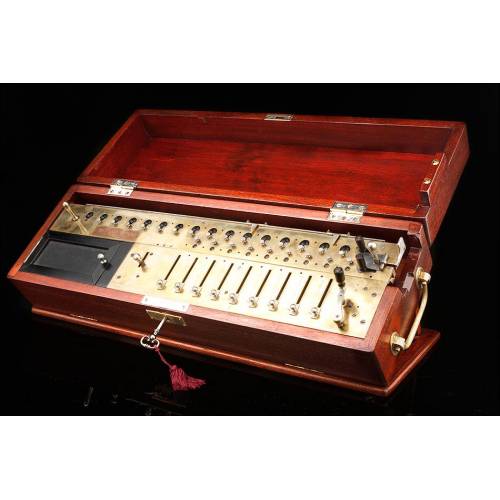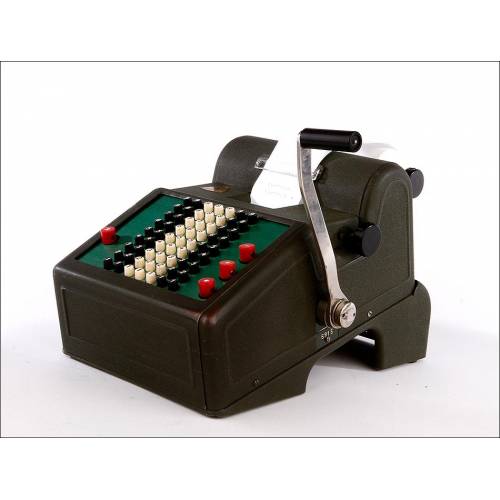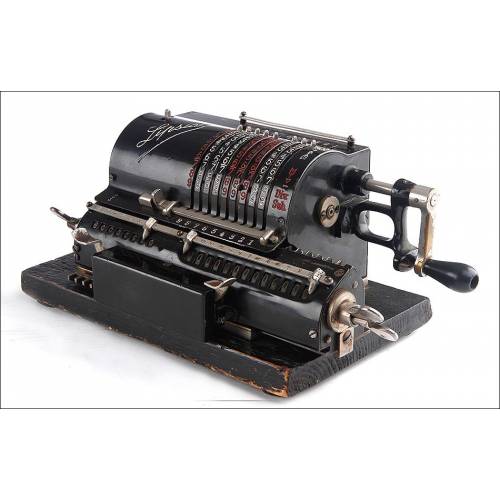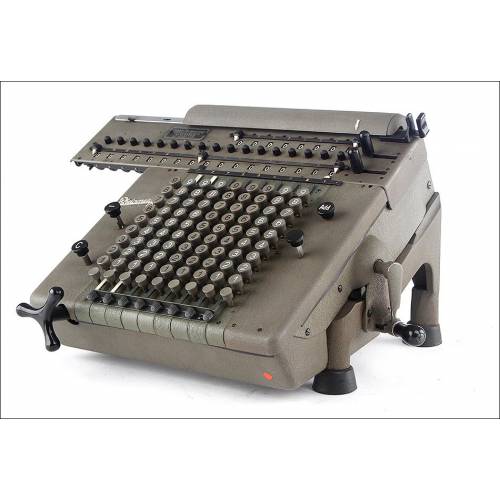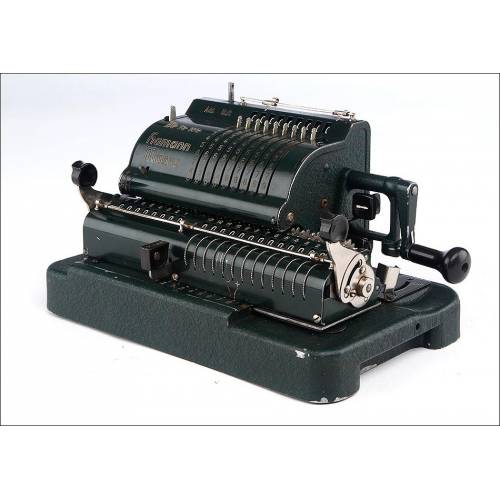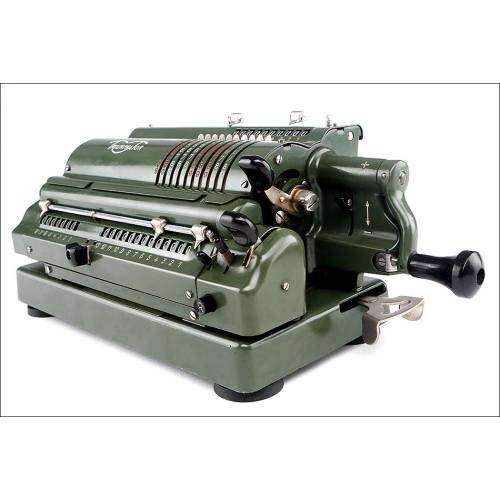J-433
Brunsviga Calculating Machine 15
Brunsviga Calculating Machine model 15, 1935.
Sold!
Splendid Brunsviga Model 15 Calculating Machine, 1935. The shiny black metal case is in mint condition. The machine has been overhauled and is in impeccable working order, so you can use it from day one if desired. The white and red enamel numerals are neatly arranged on the front of the piece, and are perfectly visible as they are unblemished. Crank mechanism or windlass with crank in perfect condition located on the right side of the device, in clear contrast with the case. It emphasizes the length of the right crank, and the particularity of sitting on a rectangular base that extends throughout the area of the crank. Attached to the upper right side is a small oval plate with the brand logo on the white lacquered lettering. This logo of a human head with internal gears would start to be used on Brunsviga machines from 1930 onwards. On the lower part, the brand name and model: BRUNSVIGA 15, as well as the manufacturer's data, appear in white letters. It is revised and in perfect working order. This type of machines are objects for science lovers. They have their origin in the XVII century, when the first adding machines were built, characterized by using a gear-based operation, which arise to alleviate the work activity of those people engaged in accounting work. This type of machines were already much admired at the time, based on a system devised by Willigodt Odhner, the variant of the one developed by Leibniz in the 18th century. The German engineer Franz Trinks was the technical director of the Grimme, Natalis & Co factory in Brunswick (Germany). In 1892 he was granted a patent for the well-known Odhner machines to be marketed in Germany, Belgium and Switzerland under the brand name Brunsviga. In a short period of time, more than 500 machines were sold, mainly due to their reliability and low price. More than 500,000 machines were manufactured in various models. Without a doubt, the Brunsviga brand became the leader in the sale of calculating machines in Germany, without stopping production even during the two world wars. In the post-war period, industrial design was applied to these machines for the first time, developing technologically advanced models at high prices. In 1957 the Olympia factory of calculating machines bought 35% of the shares of the Brunsviga company, finally acquiring all of them in 1958. Machines of the Brunsviga brand were manufactured until 1964, when the entry into the market of electronic machines finally put an end to this prosperous factory. Magnificent calculating machine. A real treasure for nostalgic collectors!Magnificent four volumes of the wonders of science by Louis Figuier, publishing house Furne, Jouvet et cie Paris 1868-1870.We are talking about bindings of the time in good condition from the first page to the last. The dimensions of the volumes are 29x20 cm and their total weight is 7,5kg.The volumes are composed of the following subjects:

